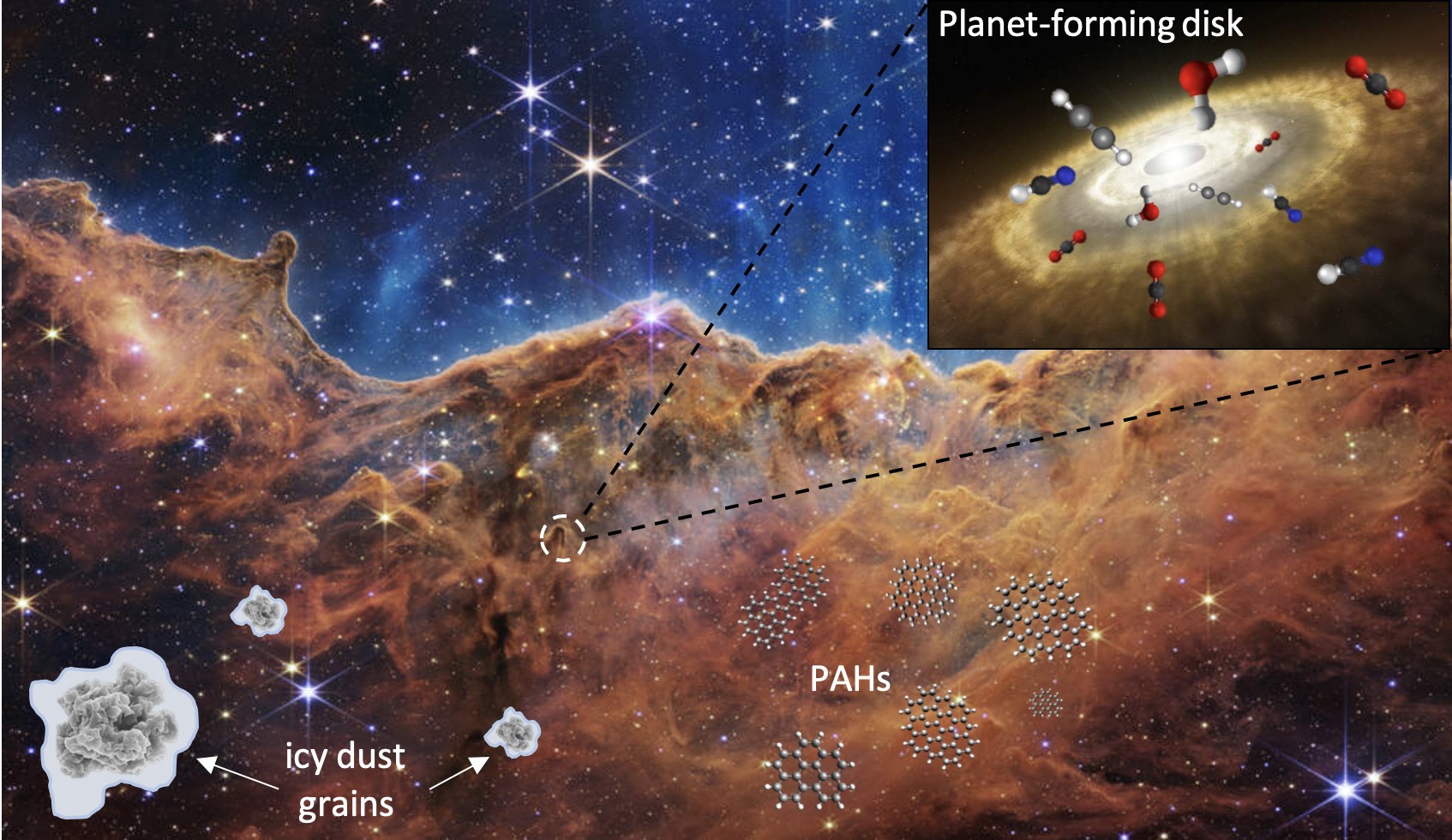1.6 million euros for Astrochemistry and James Webb Space Telescope
The Dutch Research Council (Nederlandse Organisatie voor Wetenschappelijk Onderzoek, NWO), recently awarded funding to the Dutch Astrochemistry Network (DAN), led by Prof. Inga Kamp of the Kapteyn Astronomical Institute. DAN receives the funding for their research programme ‘Dutch Astrochemistry in the era of the James Webb Space Telescope (JWST)’. The goal is to gain more insights into the origin and evolution of molecules in space and their role in the universe by using JWST data.
The application was submitted by Prof. Inga Kamp, on behalf of a team of researchers from six Dutch universities and research institutes (DAN). The objective of DAN is to generate new experimental and theoretical data that will aid the interpretation of astronomical observations performed by JWST. Withing the programme, researchers will study how the main materials that carry carbon, oxygen, nitrogen and hydrogen atoms, namely interstellar ices and hydrocarbons, evolve chemically from molecular clouds to the stages where they are incorporated into planets and their atmospheres. The six partners are the University of Groningen, Radboud University Nijmegen, University of Amsterdam, Leiden University, Technical University of Delft and Netherlands Institute for Space Research SRON.
Launched in 2021, the James Webb Space Telescope (JWST) is the most complex and powerful space telescope ever built. DAN is an interdisciplinary network established by NWO in 2010. DAN brings together experts in astronomical observations, quantum chemical calculations, modelling and laboratory astrophysics.

More news
-
11 December 2025
Stormy planets and an unexpected atmosphere
-
09 December 2025
Faculty of Impact Grant for new brain cancer treatment
